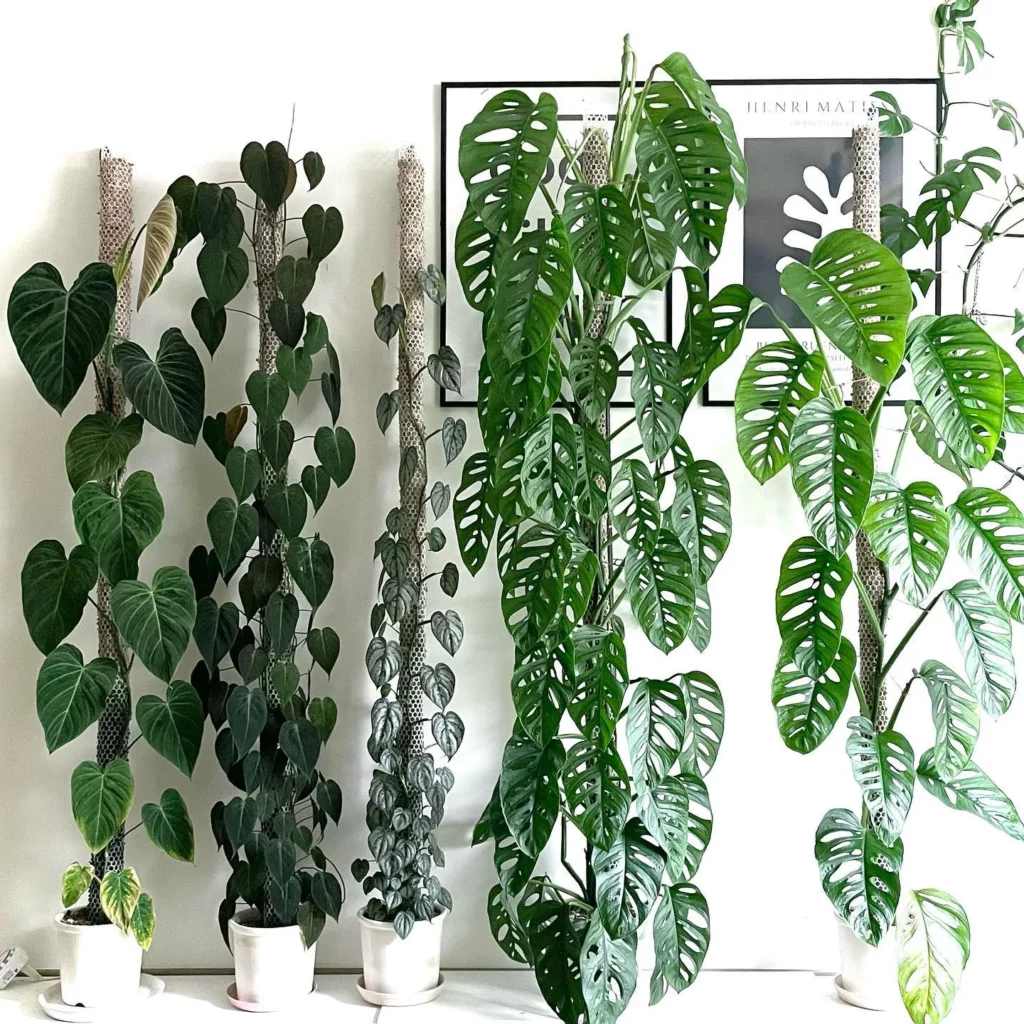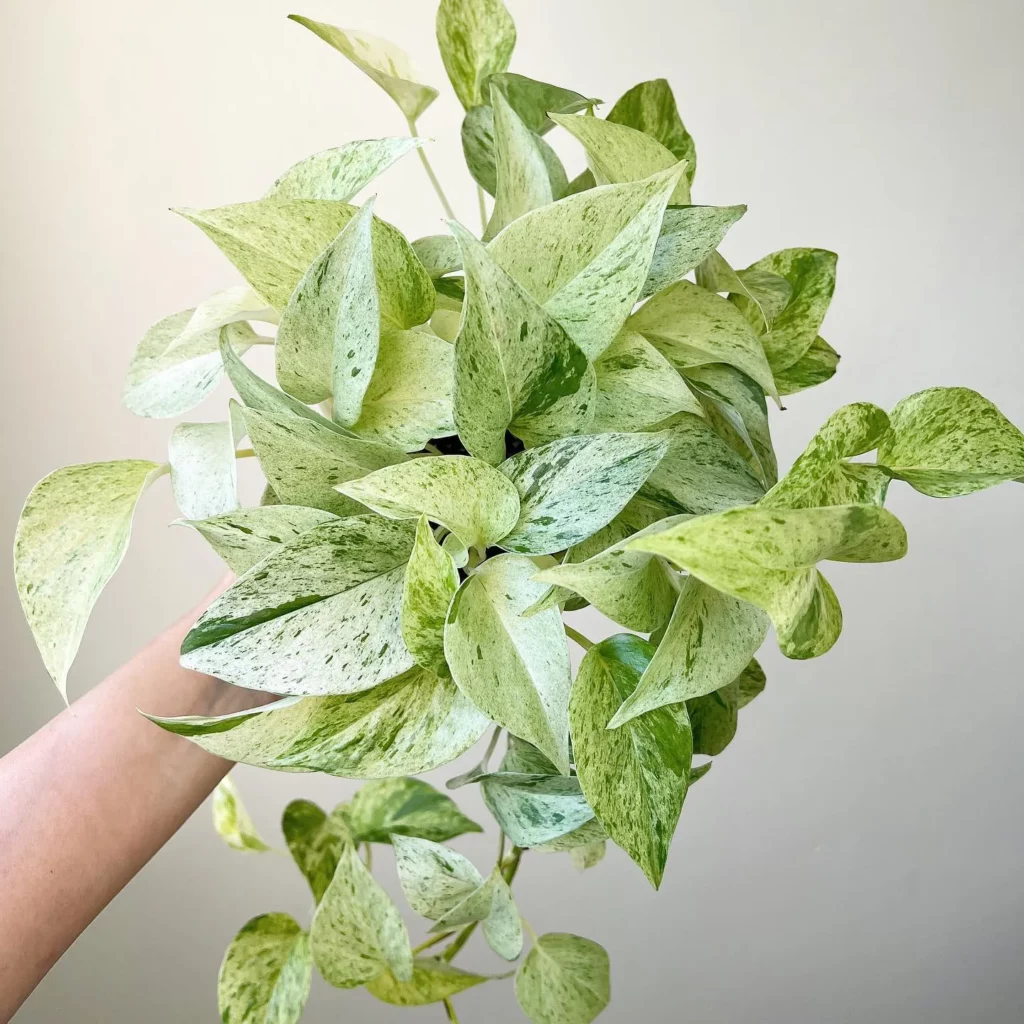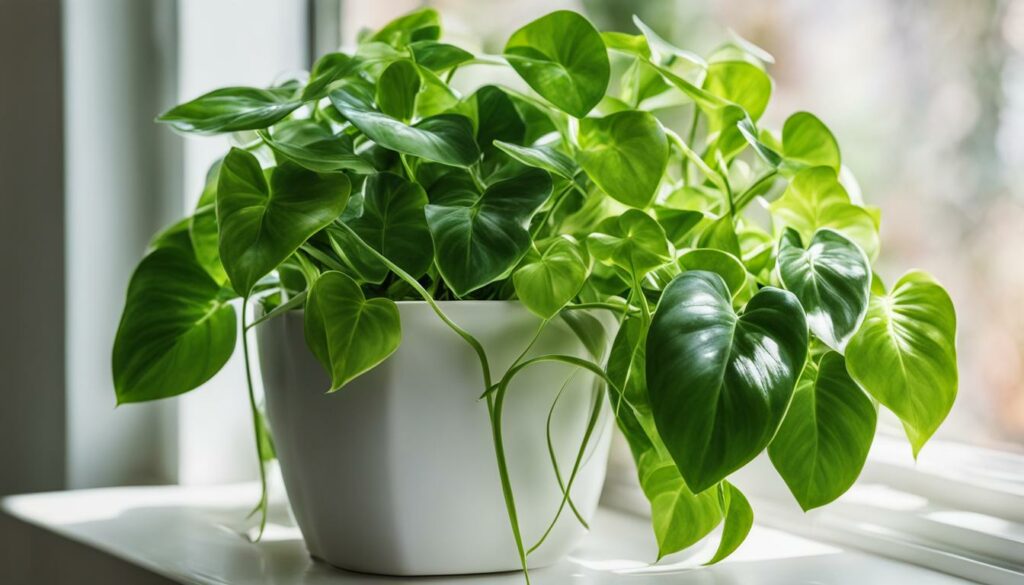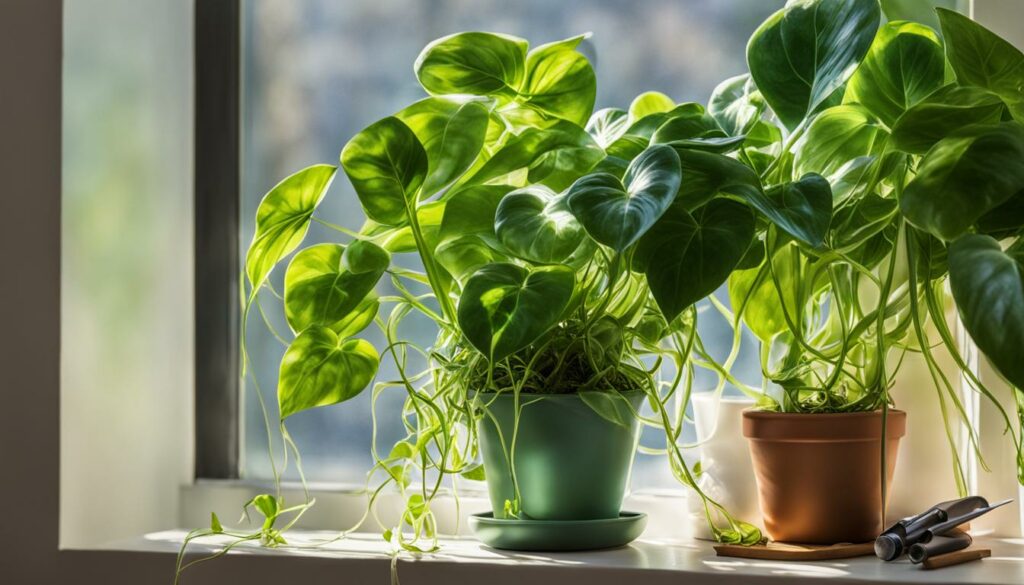The Glacier Pothos, also known as Epipremnum aureum ‘Glacier,’ is a stunning variety of Pothos that will add a touch of elegance to your home. And after reading this, check out our Complete Guide on Pothos (including photos and other varieties).
Planting and Lighting Requirements for Glacier Pothos
- Use well-draining soil with a slightly acidic pH.
- Use a 1:1 mixture of organic indoor potting soil and perlite.
- Place in bright, indirect light.
- Avoid low-light areas to prevent legginess and loss of variegation.
Watering and Humidity for Glacier Pothos
Proper watering and humidity levels are crucial for the health and well-being of your Glacier Pothos.
![Glacier Pothos Watering and Humidity 1 | Bonsaimery.com Glacier Pothos Care Guide [Expert Guide] And Photos 3](https://bonsaimery.com/wp-content/uploads/2024/03/Glacier-Pothos-Watering-and-Humidity-1-1024x585.jpg)
Here are some guidelines to ensure you provide the right care:
Here are some guidelines to ensure you provide the right care:
Watering Frequency
- Water your Glacier Pothos when the top 2 to 3 inches of soil feel dry to the touch. Overwatering can lead to root rot, so it’s important to avoid keeping the soil overly saturated.
- Allow any excess water to drain from the pot’s drainage holes to prevent waterlogging.
- During the active growing season, which is typically spring and summer, the Glacier Pothos may require more frequent watering. Monitor the soil moisture regularly to adjust your watering schedule accordingly.
Humidity Requirements
The Glacier Pothos thrives in higher humidity levels, but it can tolerate slightly lower humidity as well. To increase humidity around your plant:
- Consider placing a small humidifier near the plant to create a more favorable environment.
- Grouping your Glacier Pothos with other plants can also create a microclimate with higher humidity.
Monitoring the moisture levels and humidity of your Glacier Pothos will help ensure a healthy and vibrant plant.
Fertilizing and Pruning Glacier Pothos
Proper fertilization and pruning are essential for ensuring the health and vitality of your Glacier Pothos.
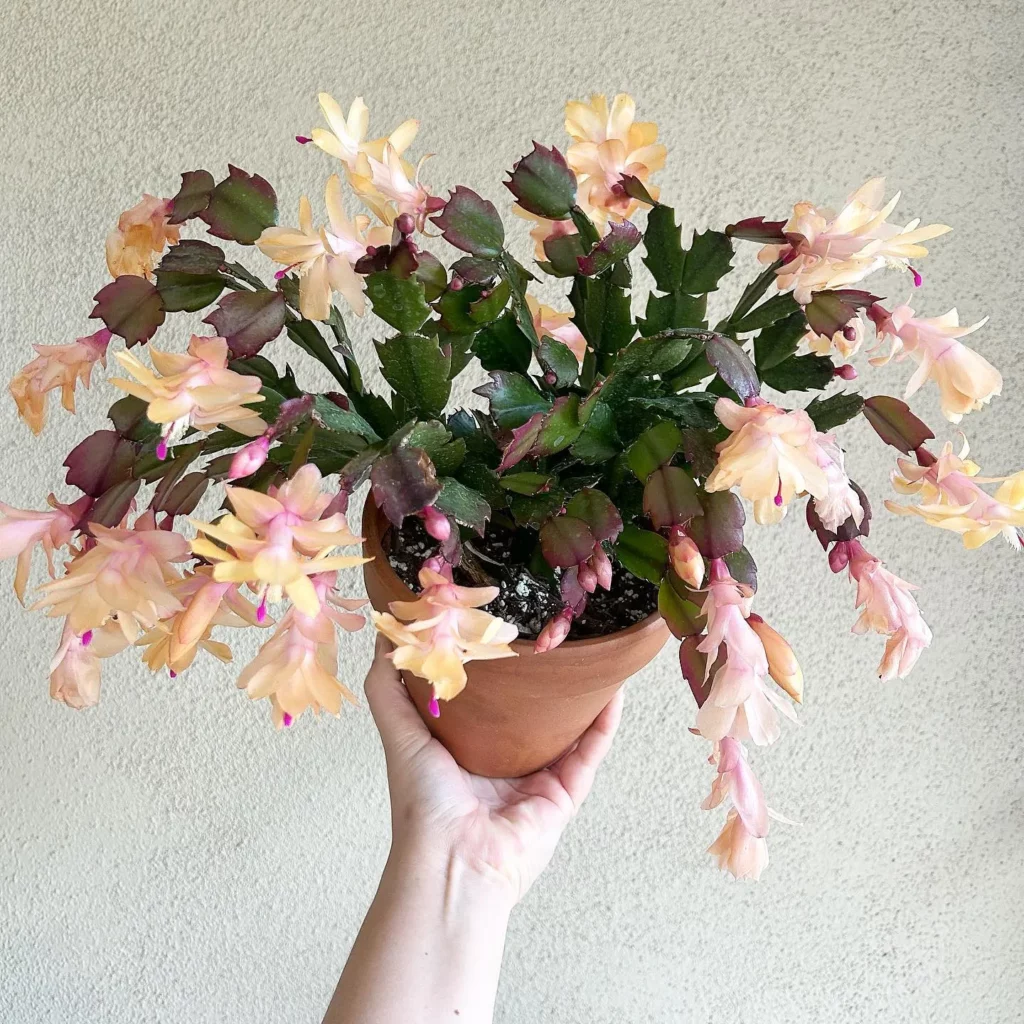
Follow these tips to keep your plant thriving:
1. Fertilizing:
During the active growing season in spring and summer, it’s important to provide your Glacier Pothos with regular fertilization. Choose a balanced liquid fertilizer and apply it once a month according to the package instructions.
This will supply the necessary nutrients to support healthy growth and vibrant foliage. Remember to dilute the fertilizer to half strength to avoid overfeeding and burning the plant’s roots.
2. Pruning:
While pruning is not necessary for Glacier Pothos, occasional trimming can help control its size and shape. When pruning, be mindful that pothos vines do not branch where they are cut. Instead, new shoots emerge from the closest node.
To encourage bushier growth, prune back long trailing vines by cutting just above a leaf node. This will stimulate the plant to produce new growth from that point. You can propagate the pruned cuttings by placing them in water or directly into a well-draining potting mix.
Repotting and Common Problems with Glacier Pothos
Repotting is an essential part of caring for your Glacier Pothos. While this plant can tolerate being slightly root bound, repotting every 2 to 3 years is recommended to allow for proper growth and nutrient absorption.
Signs that your Glacier Pothos needs repotting include roots growing from the drainage holes and the plant becoming top-heavy. When repotting, choose a pot that is one size larger than the current one and use a well-draining potting mix.
When it comes to common problems with Glacier Pothos, yellow leaves are often a cause for concern. Yellow leaves can indicate both underwatering and overwatering.
To prevent this issue, make sure to water your plant when the top 2 to 3 inches of soil are dry. Additionally, brown leaves can be a sign of low humidity or too much direct light. Ensure your plant is placed in a location with adequate humidity and avoid placing it in direct sunlight.
Another common issue with Glacier Pothos is stunted growth, which is often caused by a lack of light. This plant thrives in bright, indirect light, so make sure it is placed in an area where it receives sufficient light throughout the day.
If you notice stunted growth, consider moving your Glacier Pothos to a brighter location or providing supplemental artificial light.
- Repot your Glacier Pothos every 2 to 3 years to promote healthy growth.
- Yellow leaves may indicate underwatering or overwatering.
- Brown leaves can be a sign of low humidity or too much direct light.
- Stunted growth is often caused by a lack of light.
Next, fill a container with either perlite or coarse sand, ensuring that it has good drainage. Insert the stem cutting into the medium, making sure it is upright and stable. Place the container in a location with bright, indirect light.
FAQ
Q: Is the Glacier Pothos toxic to pets?
A: Yes, the Glacier Pothos is toxic to pets. It should be kept out of their reach to avoid any potential ingestion and subsequent irritation to their lips, mouth, and throat.
Q: How often should I water my Glacier Pothos?
A: Watering should be done when the top 2 to 3 inches of soil are dry. It’s important to allow the soil to dry out slightly between waterings to prevent root rot.
Q: What should I do if my Glacier Pothos leaves turn yellow or brown?
A: Yellow leaves may indicate underwatering or overwatering, while brown leaves can be a sign of low humidity or too much direct light. Adjusting the watering frequency and placement of the plant can help resolve these issues.
Q: How often should I fertilize my Glacier Pothos?
A: During the active growing season in spring and summer, it is recommended to apply a balanced liquid fertilizer to the Glacier Pothos once a month to promote healthy growth.
Q: Do I need to prune my Glacier Pothos?
A: Pruning is not necessary for the Glacier Pothos, but it can be done occasionally to control its size and shape. When pruning, remember that pothos vines do not branch at the location of the cut but send out new shoots from the closest node.
Q: How often should I repot my Glacier Pothos?
A: The Glacier Pothos does not require frequent repotting and can tolerate being slightly root bound. It should be repotted every 2 to 3 years or when signs of root binding, such as roots growing from the drainage holes, are observed.
Q: How can I increase the humidity around my Glacier Pothos?
A: The Glacier Pothos can tolerate slightly lower humidity levels but will thrive in a more humid environment. Placing a small humidifier near the plant or grouping it with other plants can help increase humidity.
Q: Can I propagate my Glacier Pothos?
A: Yes, the Glacier Pothos can be easily propagated through stem cuttings. Simply take a cutting with a few nodes and place it in water or moist soil until roots develop.

![Glacier Pothos 1 1024x585 1 | Bonsaimery.com Glacier Pothos Care Guide [Expert Guide] And Photos 2](https://bonsaimery.com/wp-content/uploads/2024/03/Glacier-Pothos-1-1024x585-1.jpg)
